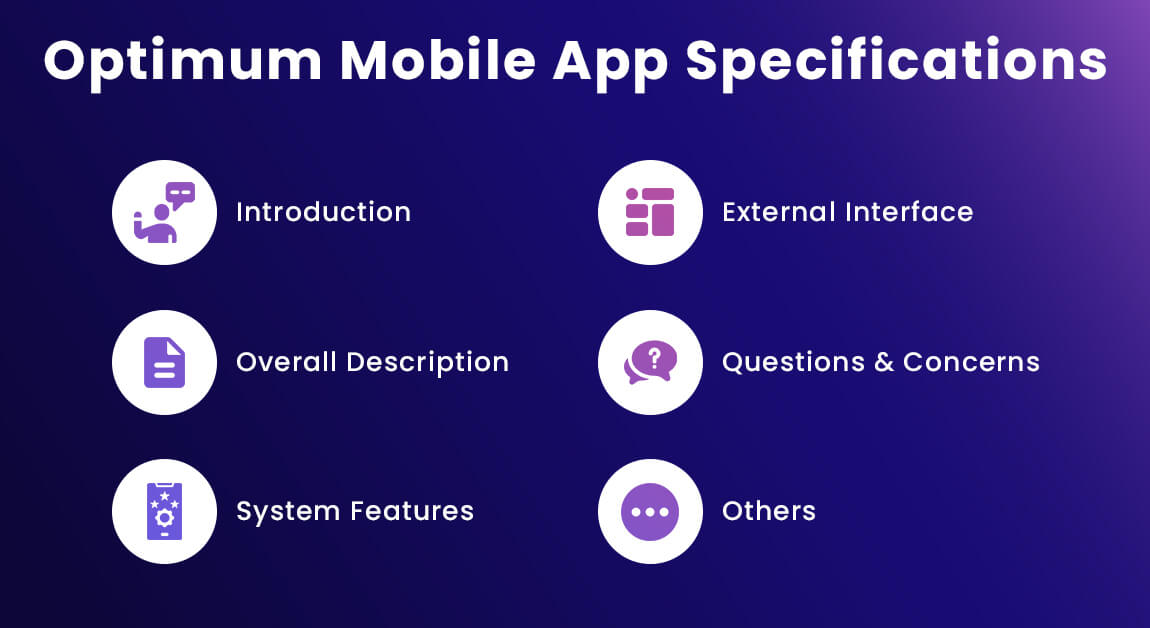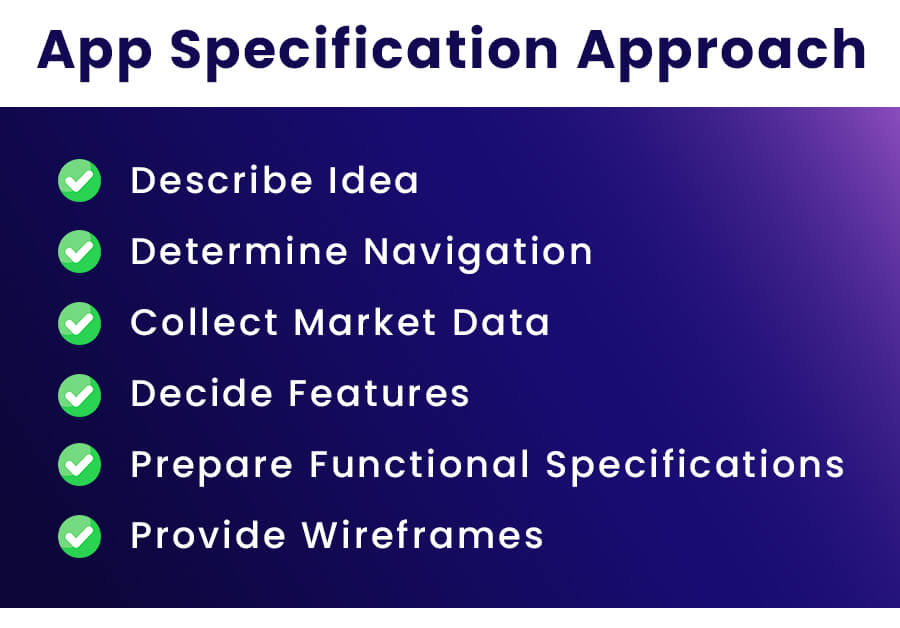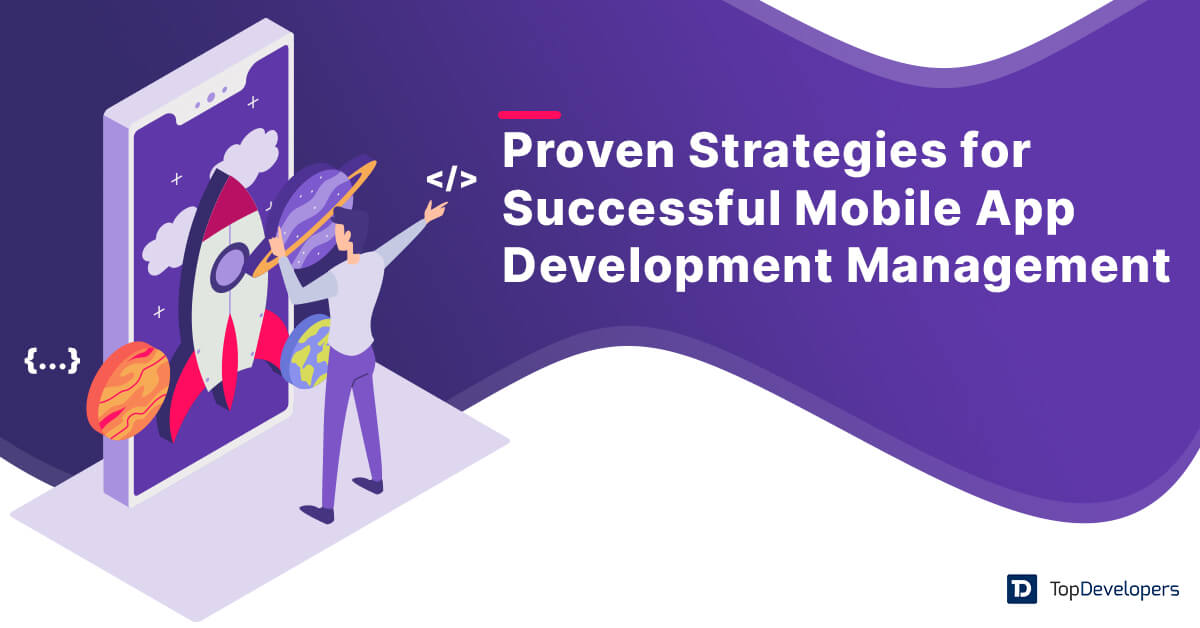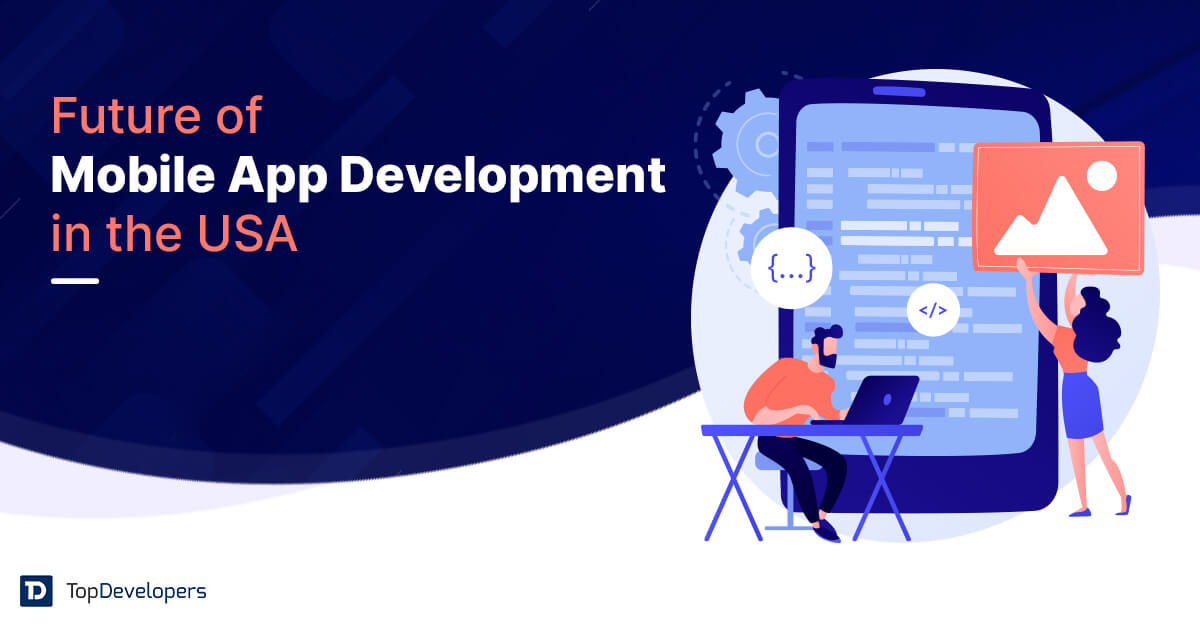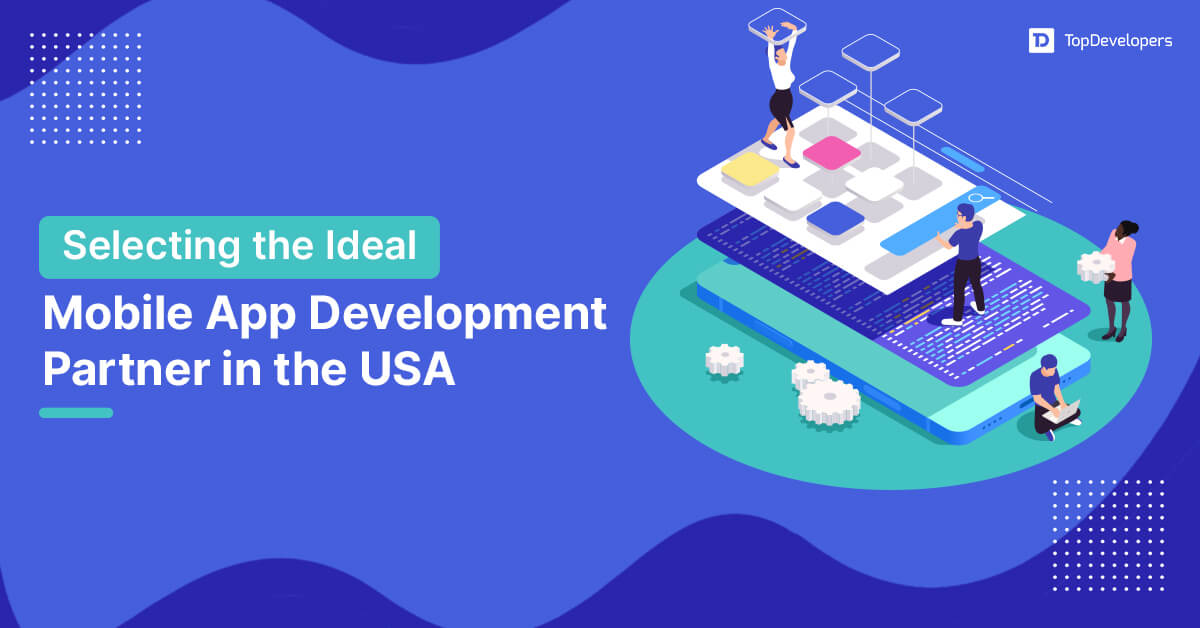
The application specification is a comprehensive and consistent document that defines the app’s prerequisites and brings the mobile app development team and owner’s vision together. It holds special importance for any business looking to build a mobile app because it serves as a roadmap for understanding the tasks that need to be completed and prevents any unexpected issues during project execution.
It’s important to remember that the requirements to design and develop a mobile app can be modified to suit your specific needs. This article will examine the importance of mobile app specifications and offer recommendations for drafting them efficiently.
Table of Contents
What is Mobile App Development Specification?
A mobile app product specification is a detailed technical document outlining the important aspects of a mobile app for business which includes the app’s features, goals, and technical requirements, serving as the foundation for a successful product and aligning the app development team with the owner’s vision.
Furthermore, it includes acceptance criteria, project success metrics, user requirements, and business requirements to aid in building a project scope. A well-prepared mobile app specification document, even via template or from an example, prevents the development of unnecessary functions and reduces rework, thereby decreasing app development costs.
Why should you Write Project Specifications for your Mobile App?
A detailed product requirements specification is crucial for multiple reasons. It clarifies the app’s core concept, features, user roles, and interconnections, preventing confusion during the app development process and ensuring adherence to the original vision. Additionally, it helps new team members understand expectations and tasks.
A requirements description aids in cost optimization by enabling the app development team to plan and prepare solutions to address critical issues at the best cost. Moreover, it helps in the app’s future maintenance as it can become a part of the technical documentation during regular updates and continuous development.
Characters of Good Mobile App Specification
A mobile app specification serves to define the purpose of the product, as well as its design and key features. While there is no universal template for creating a mobile app specification that will be suitable for all projects, several elements are commonly included. These elements may consist of:
Introduction
Introduce the purpose of the mobile app requirements document and identify the person responsible for updating the specifications. Provide general information about the app, including its goal, target audience, platforms, and desired technologies.
- Purpose: a brief statement that outlines the document’s objective.
- Document conventions: definitions and terms used throughout the app spec document.
- Intended audience: a description of the different types of readers for whom the document is intended.
- Project scope: a summary of the app features that will meet the business requirements.
- References: a list of any external links that may be required.
Overall Description
The following are common elements that may be included in a mobile app product specification:
- Product perspective: A description of the context and origin of the product prepared in a special format.
- Product features: A table that lists all the characteristics that will be implemented in the app.
- User roles and rights: A brief table that describes the user classes and their corresponding rights.
- Operating environment: Hardware and software platforms, as well as other products that need to be considered.
- Design and implementation constraints: Anything that restricts the outside-the-box thinking of mobile app developers and designers.
- User documents: A list of user-related documents that will be released along with the app.
- Assumptions and dependencies: A section for anything that is still unclear or unclassified in the current stage.
Product Perspective
Taking into account several important factors, the following are the specifications for the mobile app from a product standpoint which comprise:
- Provide a description of the technology stack that will be utilized, including the backend, frontend, and mobile technologies.
- Create the database performance, even if it seems inconsequential at this point. Obtaining a thorough comprehension of every element of the system can be effectively achieved through this approach.
- Specify tables and their relationships to ensure that data aligns with the app processes.
- Determine data to save and where to store it (for instance, device, cloud, server), and what data will be lost upon app exit.
- Specify the supported languages and writing systems (for instance, RTL) for the mobile app.
- Define required third-party integrations, address performance and security, and describe the supporting infrastructure.
In addition to the above, include any extra remarks, inquiries, concerns, or specific requests about the project, and preferred communication methods.
App Features
In this section, the desired features for your mobile application are outlined. A helpful approach is to visualize how users will interact with the app and divide it into separate screens or actions. Listed below are some of the crucial features that have been noted:
- Login: The login feature, commonly utilized in mobile apps, can be done through the user’s email or social networks for a hassle-free login experience.
- Payment mode: Implementing a secure payment system such as Stripe or Braintree is necessary if your app offers any paid services.
- Geolocation: Geolocation is an essential feature for apps like car-sharing, taxi booking, rental platforms, food delivery, and social apps that require it to function properly.
- Chat: Chat is necessary for certain types of apps, such as social or dating apps. It can also be implemented to increase user experience. Depending on the app’s needs, you can have live chat or comment-based chat.
User Roles
It is important to identify all the different categories of users who will be using your application. For a few apps, the mobile app development process is crafted by considering only one role, while others may have multiple roles.
It is necessary to describe the user stories for each role so that both you and your hired developers can better understand the required functionality from the user’s perspective. This can help ensure that the mobile app is developed to meet the needs and expectations of all users.
System Features
To ensure all functional requirements are covered, the app’s primary services must be defined in the mobile app spec. Each feature of mobile app should have a detailed explanation of its purpose and priority, as well as the stimulus/response sequences for each trigger and the corresponding response.
The functional requirements for each service should also be included, which entails use cases and user stories covering all possible scenarios, including alternate ones and exceptions.
External Interface
The technical specification for a mobile app contains various important external interfaces that must be considered, including User interfaces, hardware interface, software interface, and communication interface. These interfaces are crucial components of the app and should be given careful attention in order to ensure that the app functions properly and meets the needs of its users.
- UI/UX Design
The mobile app design specification should include a detailed prototype and description of all app screens and view sections, collectively known as the user interface. It is important to present each screen or tab separately, along with accompanying visual materials such as images and presentations.
- Hardware Interface
The mobile app specification should include a detailed description of the logical and physical characteristics of the hardware interfaces between the app and the device it will be running on. This includes the use of physical controls, communication protocols, and any other relevant information pertaining to the interface between the app and the device.
In essence, the specification should outline the specific device models that the app is designed to run on, as well as the specific interface requirements that must be met in order for the app to function properly.
- Software Interface
This section of the mobile app specification focuses on the technical aspects of the app, including APIs, cross-platform compatibility, operating systems, databases, third-party tools, and integrated components.
It’s essential to specify whether the app needs social media integration and provide a general description of the server part, including configuring the mobile app to send data to and from an external server. Other adjustable parameters include the availability of print and in-app purchases, support for geographic data functionality, and push notifications.
- Communication Interface
This section covers various communication protocols and related definitions, such as email, browser, server exchange protocols, and message formatting.
Questions and Concerns
In order to create a comprehensive and effective functional specification for a mobile app, it is important to write mobile application requirements. Here are some key questions to ask when creating clear guidelines for your mobile app specification:
Question: What are the business objectives or purpose of your app?
A: It is important to consider the purpose of your app, its business idea, and the problems it will help users solve.
Question: Who are the end users of your app?
A: Having a proper understanding of your mobile app users will help you create strategies on how to target them and how to design your mobile UI to attract more users to convert into your customers. Also, Understanding their demography such as age, income, and background can be helpful.
Question: What features will your app have?
A: There are many features that one can integrate into their mobile application. Features such as login, payment processing, push notifications, and alerts are common features that should be defined in your mobile app specification.
Performance
When conducting a performance evaluation, it is important to pay close attention to metrics that can be measured such as working speed, efficiency, effectiveness, and other related facets.
Safety & Security
During the procedure of mobile app development, it is important to consider all necessary precautions to prevent any potential harm that may occur. Additionally, it is critical to implement all required standards and provisions to prevent any data breaches from occurring.
Other Requirements
This section can be used to include any additional requirements that do not fit in any other section of the mobile app specification. Other important information can be included in the form of appendices, which are divided into several sections to provide more details on various requirements specified, such as:
- Appendix A: Glossary – containing definitions to help understand the Software Requirements Specifications (SRS) better.
- Appendix B: Analysis Models – for diagrams and visual modeling results, where Data Flow Diagram (DFD) is required.
- Appendix C: List of Problems – for any unfinished parts or unclear details, with the use of TBD (To Be Determined) note for such cases.
Approach to App Specification Writing
When it comes to writing an app specification document for a mobile app, the process may seem time-consuming and extensive, but it is not particularly difficult. As long as you have a clear idea of the app’s intended design, you can gradually progress from basic to more intricate details.
Describe the Vision
To develop a Product Perspective section for a mobile app, it is necessary to summarize its main features and intended user base, while incorporating relevant contextual details like competitor analysis or identifying a niche market. Subsequently, conducting extensive research to determine the best technologies, tech stack, and tools to implement the app’s vision is crucial. By following these steps, a comprehensive text can be created that is suitable for a Product Perspective section.
Determine basic Navigation
Brainstorm all possible user actions and system responses, identify any omitted actions, and evaluate each one for alternative scenarios and potential exceptions. Typically, user and system actions follow a back-and-forth pattern.
Collect Market Data
Instead of including extensive marketing research in the requirements specification document, it is more appropriate to analyze primary competitors, their products’ platforms (iOS, Android, or both), and their relative popularity. It is also useful to include audience details such as preferred mobile operating system, gender demographics, age range, income level, and geographical location.
Decide Features
Reassess the feature list to determine its importance and priority. Some app features may be deemed unnecessary while others may require less development time. The “MoSCoW” analysis technique can be utilized to facilitate this process by categorizing features as must-have, should-have, could-have, and won’t-have (refer to the linked resource for further details). The feature list should only include those that align with the business objectives after being updated.
Prepare Functional Specification
This section may seem more complex than the previous ones, but it is not. To start, use the validated scenarios to create a table of user roles. Then, create a table with the characteristics of your mobile app to aid in completing the System Features section.
Although there are other tables to fill out, they are all brief. After reviewing them, you may find that half of the non-functional requirements are unnecessary. Moreover, all the necessary data for the remaining tables can be found with a quick Google search.
Provide Wireframes
The concluding phase of the process is typically the most time-intensive. Although it may not be essential to create wireframes for every screen in the app, it is imperative that all of the features mentioned previously are incorporated into the wireframes.
You can streamline and accelerate the process of prototyping or wireframing with various tools such as Azure RP (for both Windows and Mac), Balsamiq (for Windows, Mac, web, and Google Drive), Figma (for Windows, Mac, and Linux), Sketch (for Mac), and several others.
Do you know: How to Protect Your App Idea?
Conclusion
Having a clear mobile app specification is crucial in the development process. In the best mobile app development, it is a kind of mandatory step for smooth sailing. Although it may seem daunting to invest in app specifications at the outset, they can prevent higher expenses during the later stages of the project.
The best mobile app development companies follow the app specifications process to create exceptional apps that align with their clients’ mobile app business plans. Developing a specification of the app can help developers better understand the idea and define all project goals and measurements, facilitating the overall process which helps to create a successful mobile app.
 Avantika Shergil
| May 5, 2023
Avantika Shergil
| May 5, 2023
An enthusiastic Operations Manager at TopDevelopers.co, coordinating and managing the technical and functional areas. She is an adventure lover, passionate traveler, an admirer of nature, who believes that a cup of coffee is the prime source to feel rejuvenated. Researching and writing about technology keeps her boosted and enhances her professional journeying.
